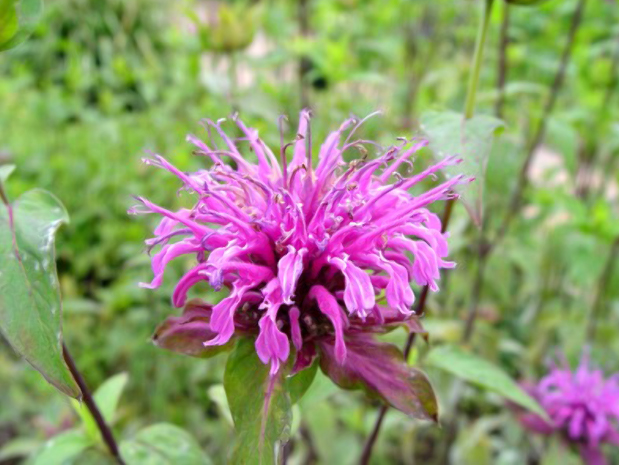
If you have any questions, please call Customer Service toll-free at (800) 925-9387 or contact us by email. See our shipping information page for approximate ship dates and more detailed information. If your order requires more than one shipment and all items are shipping to the same address, there is no additional shipping charge. Perennial and spring-planted bulb orders will arrive separately from seeds. Perennials and spring-planted bulbs are shipped at the proper planting time for your hardiness zone. Please open upon receipt and follow the instructions included. All perennials and spring-planted bulbs are packaged to withstand shipping and are fully-guaranteed. The ‘Plant Information’ section describes how that item will ship. Some perennials are shipped as potted plants, some as perennial roots packed in peat. You will receive a second email the day your order ships telling you how it has been sent.

Bee balm plant information download#
View more Planting Guides, or download our complete Planting Guide for tips on caring for your plants when you receive your order, as well as planting instructions for Perennials, Spring-Planted Bulbs, Fall-Planted Bulbs, Cacti & Succulents, Xeric Plants and more.Īs soon as your order is placed you will receive a confirmation email. Zones 4-9 SHOP ALL BEE BALM (MONARDA) Where to Plant Plant your Bee Balm in a spot where it will receive plenty of sunlight and evenly moist soil rich in organic matter. The title 'bee balm' refers to bees appreciation of a plant rather than the plant itself.

The cold hardy zone 4 varieties are excellent for fall planting. Also known as bee balm, horsemint is native herb worth adding to your garden. If you have particularly challenging gardening conditions (hot humid summers, periodic drought, or cold winters-as low as USDA zone 4), we recommend planting Mondarda fistulosa or Monarda 'Peter's Purple' (USDA zone 6) which grow easily in most soil types, including clay. Divide the plants in fall every few years to keep them vigorous.Fertilize once annually in fall or spring with a top dressing mixture of Yum Yum Mix and compost.Water Bee Balm if rainfall is less than 1 inch per week. This plant enjoys moist and fertile garden soil.
Bee balm plant information full#
Plant Bee Balm in full sun (or part shade in hot summer climates).The varieties we carry are highly resistant to powdery mildew. Bee Balm is, as the name suggests, “bee friendly,” deer resistant and will attract hummingbirds and butterflies to your garden. Common Name: bee balm Type: Herbaceous perennial Family: Lamiaceae Native Range: Canada, United States Zone: 4 to 9 Height: 2.00 to 4.00 feet Spread: 2.00 to 3. This characteristic makes this species a great option for front-of-the-border highlights or edging.Bee Balm (Monarda) is a showy and vigorous old-fashioned garden perennial that blooms in summer. It roots at their nodes to form new plants all around it. Although it barely grows to a height of 1′ (about 30 cm), it spreads out by horizontal stems. Liriope requires little maintenance and can tolerate both sun and little shade.

These add a lovely burst of color to your border. In the late summer and early fall, it also produces tiny purple blooms. Bee balm pairs well with liriope muscari, a perennial that likes shade and has lovely dark green leaves 2. We continue our list of the best bee balm companion plants with liriope. They appreciate sites with full sun or light shade, well-drained soil, and no excessive foot traffic or other gardening activity that could disrupt them. If you want to start bee balm plants from seeds, sow indoors about 8 weeks before the last frost.

Plant your starts about 18 to 24 inches apart and keep the soil evenly moist while the plant establishes itself during the growing season. If they are planted outdoors in colder regions of the nation, they may require protection from the winter cold. Plant container-grown bee balm in the spring or fall. Depending on their environment, these perennials bloom from July to September. The borders of your garden can benefit from the height and color that daisies and other lovely flowers can bring.ĭaisies have vivid golden yellow to orange-red blooms that bloom in the summer and fall on plants that may become up to three feet tall and broad. They are also simple to grow and drought resistant as coneflowers. Native to North America, the bee balm plant blooms from late spring into late summer in shades of pink, lavender, purple, white and red. Shasta daisies are a nice alternative for bee balm companion planting since they draw pollinators. You may hear bee balm, a member of the mint family (Lamiaceae), also called bergamot, bergamot plant, horsemint and Oswego tea.


 0 kommentar(er)
0 kommentar(er)
